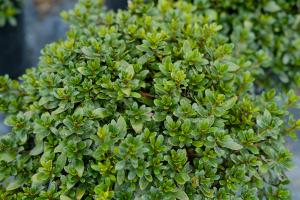Introduction
When it comes to planting tomatoes, one question that frequently comes up is what to put in the tomato hole. There are a variety of options available, and the best choice will depend on the specific needs of your tomato plants and the soil in your garden. In this article, we'll explore the different options for filling your tomato hole to give your plants the best start possible.
Basic Soil Amendments
The simplest method for filling your tomato hole is to add some basic soil amendments. This can include adding compost or aged manure to the hole before planting, which will help improve soil structure and fertility. You can also add some granular fertilizer to the hole, such as a balanced fertilizer with equal parts nitrogen, phosphorus, and potassium. This will help give your plants the nutrients they need to grow and develop properly.
It's also a good idea to add a handful of bone meal or rock phosphate to the bottom of the hole. This will provide a source of phosphorus, which is essential for root development and overall plant health. Simply mix the bone meal or rock phosphate into the soil at the bottom of the hole before planting your tomatoes.
Calcium Sources
Another important factor to consider when planting tomatoes is providing adequate calcium. Calcium is essential for strong cell walls and can help prevent common tomato diseases like blossom end rot. There are several different sources of calcium you can add to your tomato hole, including crushed eggshells, gypsum, and bonemeal.
To use eggshells, simply rinse them thoroughly and allow them to dry completely. Then crush them into small pieces and add them to the hole before planting your tomatoes. Gypsum and bonemeal can be added to the hole at the same time as your other soil amendments.
Epsom Salt
Some gardeners swear by adding Epsom salt to their tomato holes. Epsom salt is a source of magnesium, which is important for chlorophyll production and overall plant health. However, it's important not to overdo it with Epsom salt. Adding too much can lead to magnesium toxicity and can harm your plants.
A safe amount to add is around one tablespoon per gallon of water, which can be mixed into the soil at the bottom of your tomato hole before planting. You can also dissolve the Epsom salt in water and use it as a foliar spray throughout the growing season.
Conclusion
In conclusion, there are a variety of different options for filling your tomato hole when planting. Whether you choose to use basic soil amendments, calcium sources, or Epsom salt, the key is to provide your plants with the nutrients they need to thrive. By following these simple tips, you can give your tomatoes the best possible start and increase your chances of a bountiful harvest.

 how many times do yo...
how many times do yo... how many planted tre...
how many planted tre... how many pine trees ...
how many pine trees ... how many pecan trees...
how many pecan trees... how many plants comp...
how many plants comp... how many plants can ...
how many plants can ... how many plants and ...
how many plants and ... how many pepper plan...
how many pepper plan...
































